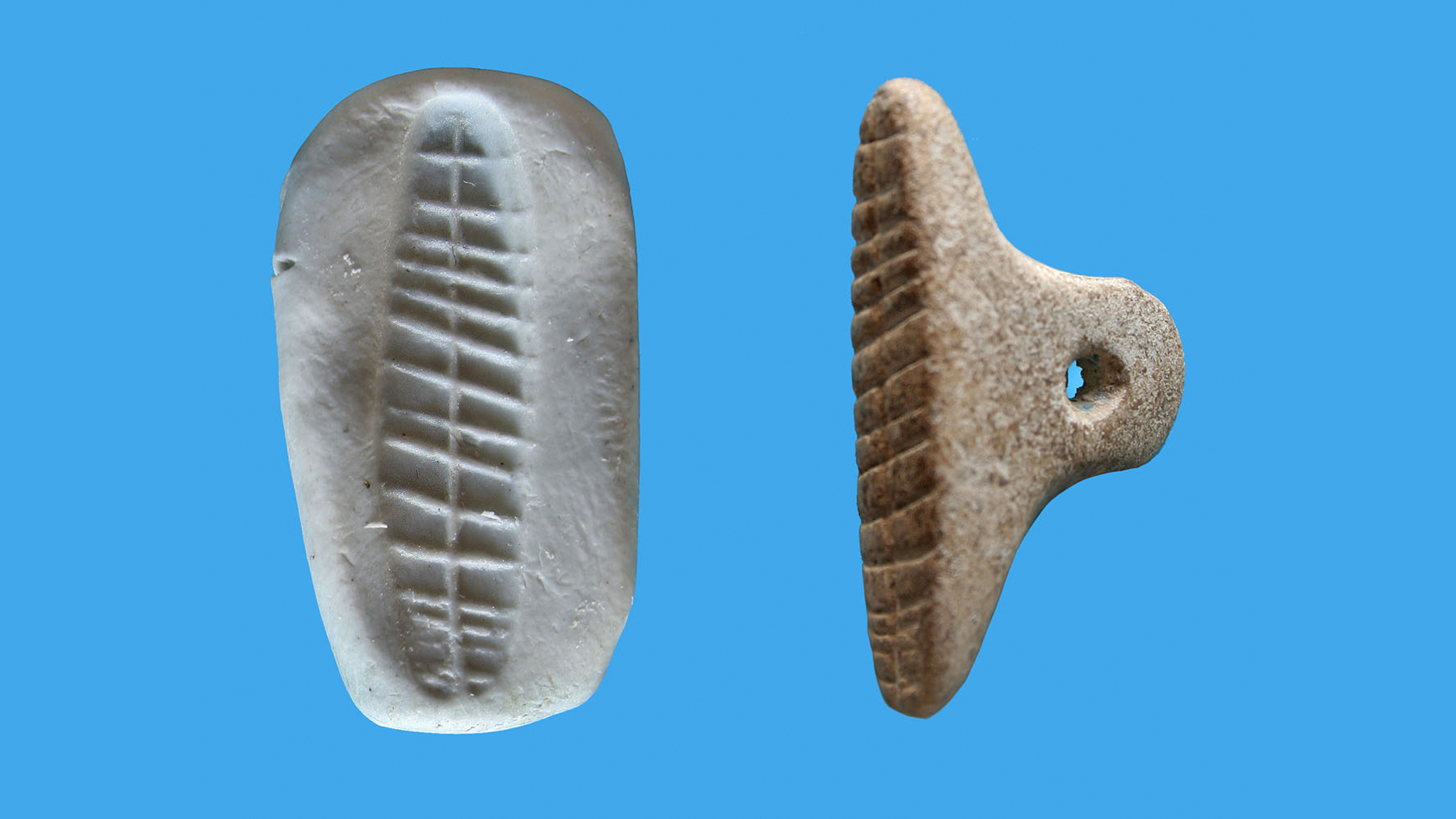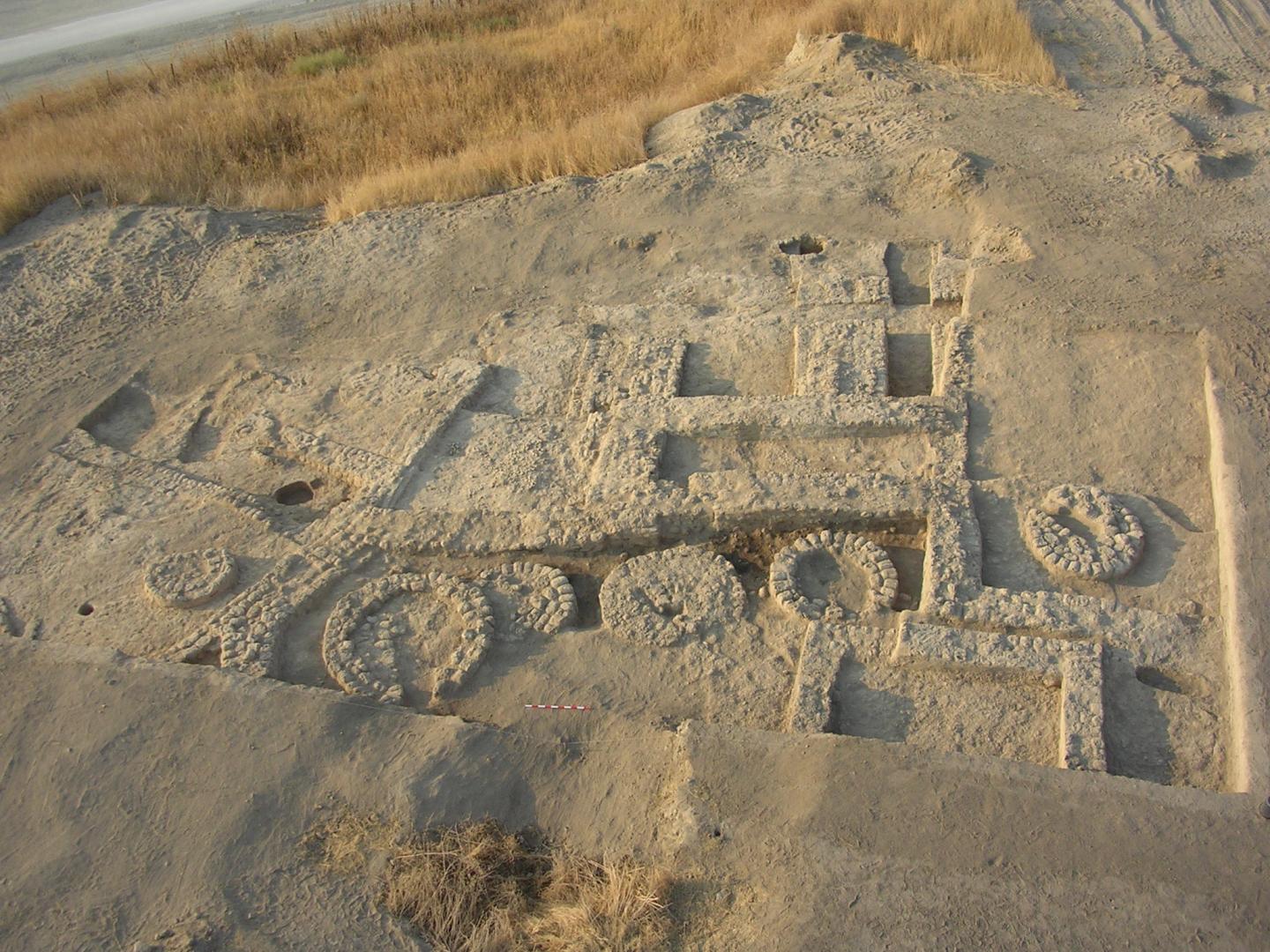7,000-year-old letter seal found in Israel hints at ancient long-distance trade
The tiny object is made up of two different stamps.

Archaeologists recently discovered Israel's oldest known seal impression, a device that stamps a pattern onto soft material such as clay or wax in order to seal an object. The tiny clay impression dates back 7,000 years and was likely used to seal and sign deliveries, as well as to keep storerooms closed, according to a new study.
The research team discovered the seal, along with nearly 150 others, during excavations that took place between 2004 and 2007 in Tel Tsaf, a prehistoric village in Israel's Beit She'an Valley. But while most of the other seals were just pieces of clay without any imprints, one had an impression with two distinct geometric shapes on them, according to The Jerusalem Post.
After conducting a thorough analysis, archaeologists identified this object as the oldest seal impression known in the region, according to a statement. Prior to this discovery, older seals dating back 8,500 years had been found in the region, but seal impressions had not.
Related: Photos: Israel's largest Neolithic excavation
Prehistoric people used such sealings, or "bulla," to sign and seal letters to prevent them from being read by nosy outsiders. But they were also used to mark shipments and to indicate that silos or barns were off-limits. As with letters, if a barn door was opened, the seal would break, making it clear that someone had gone inside, according to the statement.

"Even today, similar types of sealing are used to prevent tampering and theft," senior author Yosef Garfinkel, a professor at the Hebrew University of Jerusalem, said in a statement. "It turns out that this was already in use 7,000 years ago by land owners and local administrators to protect their property," said Garfinkel, who, with his two students at the time, led the excavation.
The ancient seal, which was found in great condition due to the dry climate of the area, is less than 0.4 inches (about a centimeter) wide and has two different stamps on it. The two different stamp patterns suggest that the seal may have been used in a commercial activity that involved two people in the transaction, according to the statement.
Sign up for the Live Science daily newsletter now
Get the world’s most fascinating discoveries delivered straight to your inbox.
Many newer seals, such as those found in Solomon's Temple in Jerusalem from about 2,600 years ago, include a name and sometimes biblical figures. But this seal dates back to a time before writing, so it was marked by geometric shapes instead.
An analysis of the clay suggested that the seal wasn't actually made in the prehistoric Beit She'an Valley but originated at least 6 miles (10 kilometers) away. Other finds from the site, which was likely home to wealthy people who had built up large stores of materials, indicate that prehistoric people of the area interacted with faraway peoples.
"At this very site, we have evidence of contact with peoples from Mesopotamia, Turkey, Egypt and Caucasia [or Caucasus]," which includes a region spanning Europe and Asia, Garfinkel said in the statement. "There is no prehistoric site anywhere in the Middle East that reveals evidence of such long-distance trade in exotic items as what we found at this particular site."
The findings were published May 18 in the journal Levant.
Originally published on Live Science.

Yasemin is a staff writer at Live Science, covering health, neuroscience and biology. Her work has appeared in Scientific American, Science and the San Jose Mercury News. She has a bachelor's degree in biomedical engineering from the University of Connecticut and a graduate certificate in science communication from the University of California, Santa Cruz.










